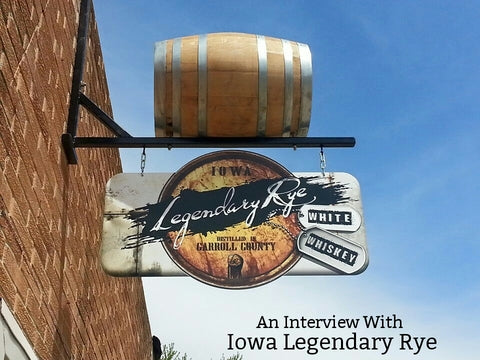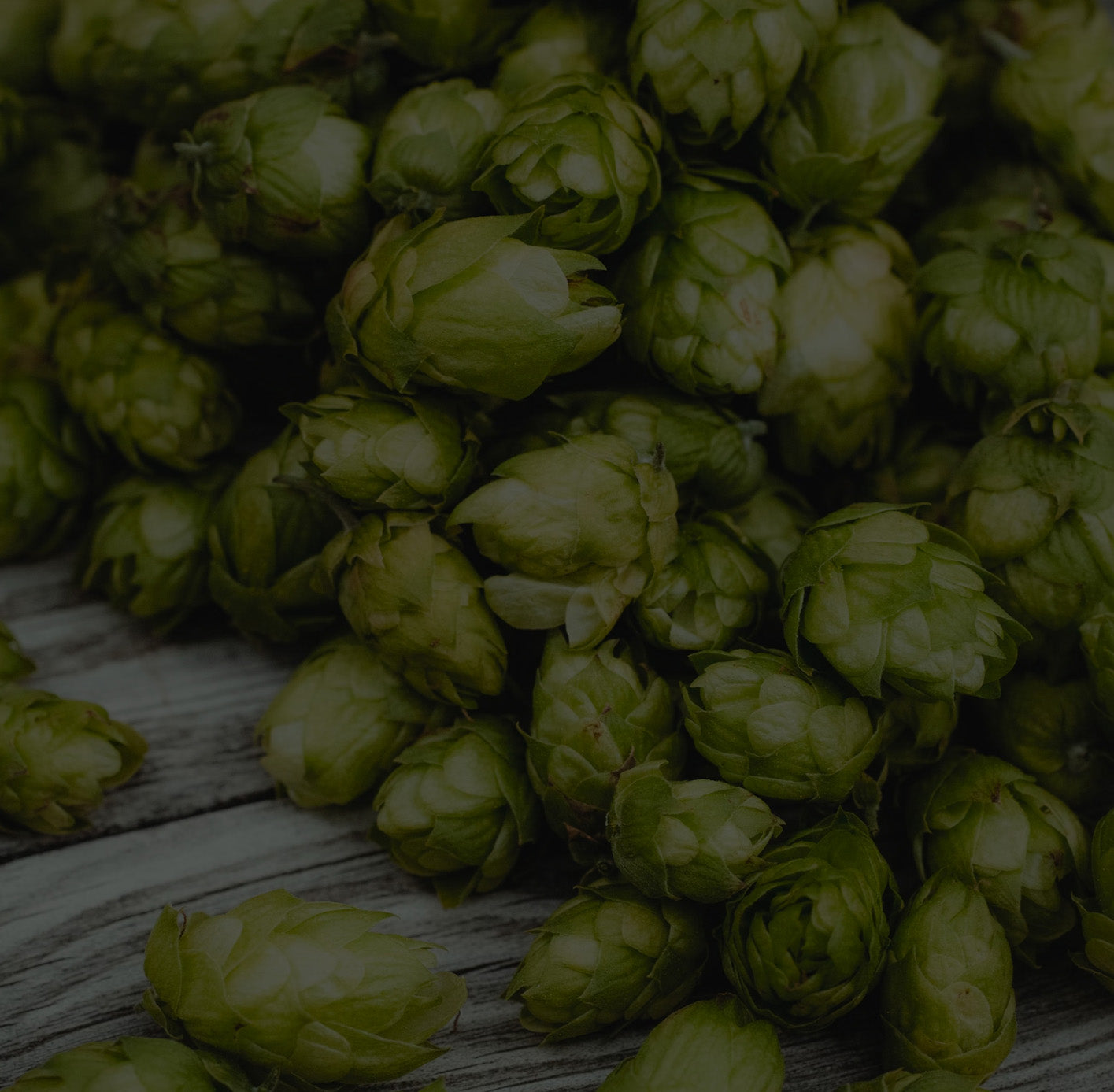An Interview with Iowa Legendary Rye:
 We recently chatted with Lisa Chase, co-owner of Iowa Legendary Rye, a mom-and-pop micro-distillery based in Carroll, Iowa. During Prohibition, Carroll County was home to serious bootleggers: Stubbornly self-reliant Midwestern folks who valued quality and their independence, and who’d be damned if anyone was going to take that away from them. It didn’t take long in the 1920s for the moonshine from Carroll County to develop a national reputation for high-quality rye whiskey that wouldn’t leave you blind. It is on this tradition of excellence that Lisa and her husband, Rich Eggers, built Iowa Legendary Rye.
We recently chatted with Lisa Chase, co-owner of Iowa Legendary Rye, a mom-and-pop micro-distillery based in Carroll, Iowa. During Prohibition, Carroll County was home to serious bootleggers: Stubbornly self-reliant Midwestern folks who valued quality and their independence, and who’d be damned if anyone was going to take that away from them. It didn’t take long in the 1920s for the moonshine from Carroll County to develop a national reputation for high-quality rye whiskey that wouldn’t leave you blind. It is on this tradition of excellence that Lisa and her husband, Rich Eggers, built Iowa Legendary Rye.
They opened in 2014 in the back of a former apothecary near the Carroll town square, and have been producing some of the finest rye whiskey around ever since. They use 100 percent rye, straight from Carroll County’s farms. They cook in small batches to preserve the original taste, and have tried to stay true to the history of the Prohibition-era bootleggers who came before them. We loved talking with them and hope you enjoy!
A Taste for History
The story behind Iowa Legendary Rye is almost as legendary as some of the old bootlegger tales from the 1920s. Lisa’s husband, Rich Eggers, grew up in Crawford, Iowa, and remembers being surrounded by bootlegging as a kid, long after Prohibition ended. We’ll let them tell you the story of how they got their rye whiskey recipe, but we promise: It’s a good one, involving kingpins, bootleggers and Al Capone. One local legend says Rich kept on making that whiskey, and that it got so popular, Lisa got nervous and told him he had to go legit or give the hobby up. We won’t ask them to confirm or deny anything, but a couple years ago, Iowa Legendary Rye’s unaged rye whiskey started showing up on liquor store shelves across Iowa. Last year, retailers in Nebraska, Illinois and Washington, D.C. started carrying it too.
Lisa and Rich like working in small batches, and don’t have plans to grow too big. But they are working on some of their first batches of aged whiskey, which should release later this year or early next. Their road to craft distilling took them through a whole slew of red tape. By the time they opened in 2014, they’d cleared approvals from the city of Carroll, the state of Iowa and, of course, the U.S. government. Read more to learn more about their particular mash style, how they got started, and why the history of rye whiskey matters so much.
Before we get started, a reminder: Distilling alcohol is illegal without a federal fuel alcohol or distilled spirit plant permit as well as relevant state permits. Our distillation equipment is designed for legal uses only and the information in this article is for educational purposes only. Please read our complete legal summary for more information on the legalities of distillation.
Clawhammer Supply: Rye whiskey is one of our favorite styles, but from what we understand, it all but disappeared before folks like you started making it again. Why did you guys decide to focus on rye?
Iowa Legendary Rye: You could say it runs in the family! Carroll County, Iowa, is famous for its Prohibition-era rye whiskey, commonly referred to as Templeton rye. During that time, many families in the area were bootlegging rye whiskey as a way to feed their families. One of the original bootleggers, Lorraine Sextro, became friends later in her life with Rich's brother, Chuck, and found they shared a common interest in distilling. Lorraine shared her recipe and technique with Chuck and worked with him to help him get it right. Rich, who has to do whatever his big brother is doing, soon discovered whiskey-making alongside Chuck, and it became his passion.
CHS: We love that you guys are throwing it back to an original bootlegger's recipe for your mash, and more, that that rye grain is grown by relatives of one of the original bootlegging kingpins. How did you guys come across that recipe, and can you tell us about that bootlegging kingpin and his family?
ILR: Lorraine ran large stills, making whiskey for kingpin Joe Irlbeck during Prohibition. Joe had ties to Chicago through Des Moines that linked directly to the infamous Al Capone. Joe's time as a bootlegger has been very well documented in both a book, Gentlemen Bootleggers by Bryce T. Bauer, and a movie, Whiskey Cookers: The Amazing True Story of Templeton, Iowa Bootleggers by Dan Manatt and Bryce T. Bauer. Joe had an entire network of townspeople who looked out for each other in order to run their highly successful bootlegging enterprise. Everyone knew, but no one talked. To get your whiskey, you needed to “know a guy.”
CHS: That’s quite a story. It sounds like history is important to you guys. We love that, of course, and we'd love to know why it matters so much to Iowa Legendary Rye to honor that history.
ILR: The people who bootlegged to survive and support their families are the parents, grandparents and great-grandparents of our friends and neighbors. Their spirit, ingenuity and dedication to each other is the bedrock of our community. We wanted to honor those people, their hard work and what they accomplished during some very difficult times in our nation's history. It wasn't just about the notoriety of big gangsters and their horrific crime sprees.
Mash Process
CHS: Can you explain your grain bill for your rye mash? We know you guys use 100% rye from the farmers and bootlegging relatives in Carroll County, but is that 100% malted barley? Or are you using unmalted barley?
LR: We combine the unmalted rye, purified water, sugar and yeast and let it ferment. When it's ready to distill, we transfer it to the still for cooking.
CHS: What size mash tuns do you have?
ILR: We mash in 55 gallon barrels.
Fermentation and Yeast
CHS: Do you use open or closed fermenters?
ILR: Open
CHS: What temperature do you ferment at?
ILR: We will tell you that we keep it warm for the yeast to do it's job.
Equipment
CHS: We love that your still is an old-school design. Can you tell us more about that? How did you guys come up with the design? What material is your still made of?
ILR: The design was hand-crafted by Rick Warner, who was a neighbor of the Sextro family when he was growing up. He followed Lorraine’s instructions to come up with a completely unique design. We now have four stills -- all hand-crafted based on his original still. We use both stainless steel and copper.
CHS: What size stills are you using?
ILR: Our pots are 26 gallon. We have two electric and two natural-gas-heated stills.
CHS: Can you explain your distilling process- do you do multiple runs or just one?
ILR: We just do one run. Who had time during Prohibition for multiple runs?
CHS: Do you save your heads and tails to re-distill?
ILR: No, we only use the hearts to ensure authentic Prohibition small batch rye whiskey flavor! Bootleggers didn't leave heads and tails sitting around to re-distill.
Keeping It Local
CHS: Why did you decide to use rye from local farmers?
ILR: We wanted to be as authentic as possible and we wanted to use as many local products as we could. This is a local product and it's the local community that we want to support. We wouldn't have a product if it wasn't for the local people and their history. The rye is actually grown for us by Brian Irlbeck, who is related to Joe Irlbeck, on land in the same area it was grown in and used 100 years ago. How cool is that?!?
CHS: Have you had any issues with consistency in the grain? We know different fields of grain can yield better efficiency than others- has this been a challenge?
ILR: We had a small learning curve, but Brian has provided us with an outstanding product and brings years of farming experience to the table.
Aging
CHS: How much of your product is going into barrels for aging?
ILR: Currently, we have more than 40 15-gallon barrels aging in our warehouse.
CHS: Are you using any other size barrels?
ILR: We have a few smaller and a few larger, but our 15-gallon are our go-to size.
CHS: How long are you aging?
ILR: With the smaller barrels, we are aiming for somewhere in the 18 month range.
CHS: What type of barrels are you using?
ILR: We only use American Oak from a small Minnesota cooperage.
CHS: Are you having any issues sourcing barrels?
ILR: Barrels are in high demand. We have to order a year's supply in advance.
Thinking Of Opening A Distillery?
CHS: Do you have any advice for our readers who are thinking about opening their own distilleries? What surprised you? What do you love? What challenge have you dealt with?
ILR: Be sure to familiarize yourself with all the state liquor laws. Iowa is a control state, which means there is a centralized purchasing process through the state and some hefty taxes levied before it gets to the retailer. The federal licensing process is quite arduous, and our biggest surprise was that they required our distillery to be up and fully functional BEFORE we could apply for the license. That's a scary proposition when your starting budget is next to nothing and you're bootstrapping your way into the distillery business! We love sharing the story behind our product and showing people our distillery and how it's made. My favorite part is watching people's reactions when they get their first taste: the old-timers who have first-hand experience with Templeton rye whiskey have a satisfied "Ah yes, that's the real deal" look, and the newbies usually have that look of astonishment -- "Wow, that's really smooth!" Our rye is truly different from anything else on the market. And we will always make sure it gets made that way.






Leave a comment